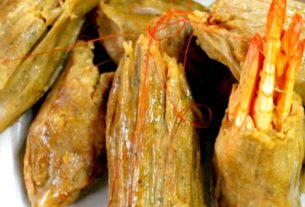Dateline – La Ceiba, Puebla, Mexico
The Artist and Curandero: continued.
La Ceiba is a small town in the state of Puebla on the highway between Mexico City and Poza Rica, Veracruz. It’s about 45 minutes from Poza Rica. The town was named after a large ceiba tree that once grew in the plaza. The name of the town has actually been changed to that of some historical figure, a fact which I choose to ignore, as do most of the people who live there. (Unless you specifically don’t want to, I suggest including the town’s changed name. It will save a lot of email later.)
Efrain is always giving me things, no matter how rough things are, a live turtle for my fish-pond, a plant for the garden, or an artifact for my collection. I try to keep up with him by bringing him back something from the U.S.A. that he wants, like a can of Coors beer, a used license plate, or maybe something for his shop.
He has a special feeling for Texas. As a young man he lived with a family near San Antonio and worked in the produce department of a grocery store. He always speaks fondly of Texas, the family he lived with and the produce department. It was during this time in Texas that he developed an interest in art.
On one of my trips to the U.S.A. I stopped by and was secretively hustled off to a back room. He opened a plastic bag and emptied its contents, pieces of a ceramic burial mask some kids had found while exploring one of the rivers. It was Efrain’s assumption that they had discovered a tomb. I asked if he could send them back to possibly find more pieces. On my return trip I found that they had. At home I pieced together with “crazy glue” about three quarters of a mask, enough to visualize the entire piece.
Sometime later I visited the archaeological site of Teotihuacan (150 B.C. – 750 A. D.). In one of the stalls where they sell things to tourists I spotted a mask almost identical to the one in my collection, and I bought it. Was the one in my collection a copy? Yes it was. But an old copy, maybe l,500 years old. Ceramic or clay items in ancient times were often duplicated with the use of molds. I have a couple of molds in my collection. My hypothesis is that the found mask was produced in Teotihuacan with the use of a mold and sold or otherwise disposed of along a trade route to the gulf. Items from Teotihuacan are found as far south as Guatamala. Their two main industries were the working of obsidian and the production of ceramics or clay items. The style of the found mask was that of Teotihuacan and the one I bought was probably copied from a copy. It seems very unlikely that in the remote area where my mask was found that anyone would have either made or purchased such a mask in recent times. The new copy and the old copy now lie side-by-side in a glass case.
After a lapse of perhaps six months, I made arrangements with one of the young men to go up the river and look for the site where the mask was found and perhaps find a tomb or at least more pieces. We drove out of town and then followed the river on a narrow dirt -road that ended at a barbed-wire cattle gate to a ranch. I parked the pick-up and we proceeded on foot. We followed the river-bed, staying on dry land as much as we could, but at times had to wade through waist deep pools of crystal clear mountain water, holding our possessions above our heads. Because of the high vertical embankments on both sides of the river we had no choice other than to climb out. It was a warm day and I was hardly conscious of the water sloshing in my shoes or the wet blue-jeans. The water was refreshing.
The river passed through lush green tropical vegetation and trees with their long tentacle-like roots reaching down from the embankments into the water. I was given fruit to eat that I had never seen or heard of before. It was a great excursion but we found nothing. My final assumption is that the water had carried the mask down to the river and to find its original resting site would be a time consuming project at best, because of the layers of vegetation and soil that probably cover it.
The last gift from Efrain was a primitive stone female figurine, about eight inches tall. Efrain said an elderly lady in La Ceiba had owned her and had her seated on an altar. Although most people in Mexico are Catholic, it is not uncommon for some to pay homage to one or more of their ancient pre-Columbian gods. I have no idea how old the idol is. She now sits on a rustic pedestal I made of old wood. She is seated with her legs crossed in front of her, her hands clasping her breasts. She wears an unusual head-dress. Her nose is prominent and somewhat hooked. Her eyes are large and her lips protruding. A large gnarled root decorates the pedestal and she is half hidden under a canopy of a fern-like plant.
She is now the mistress and guardian of a house I rent.


